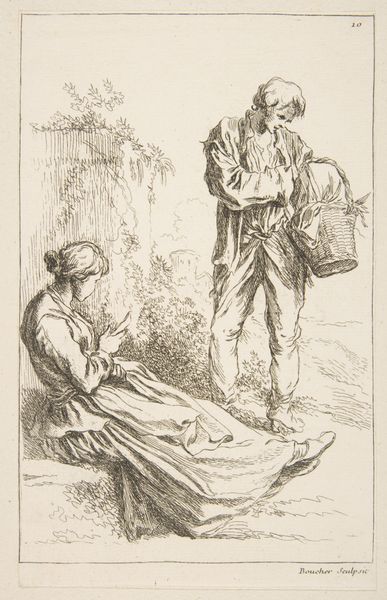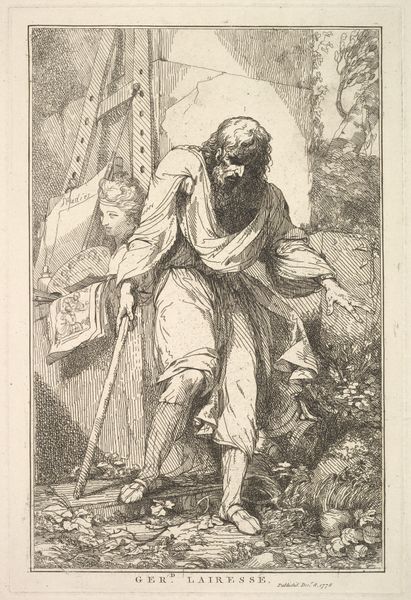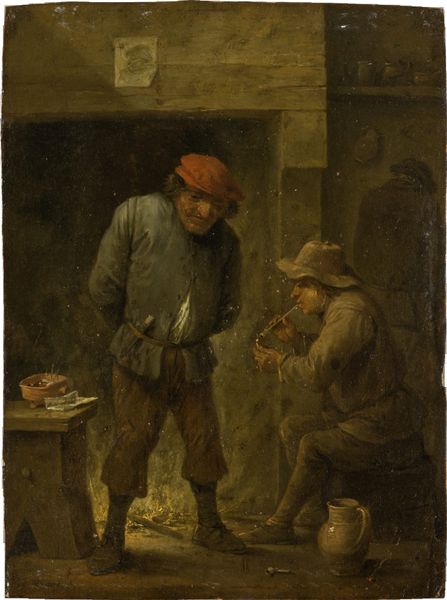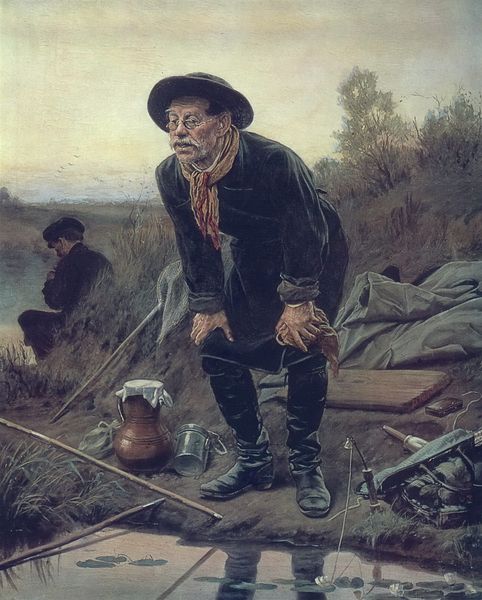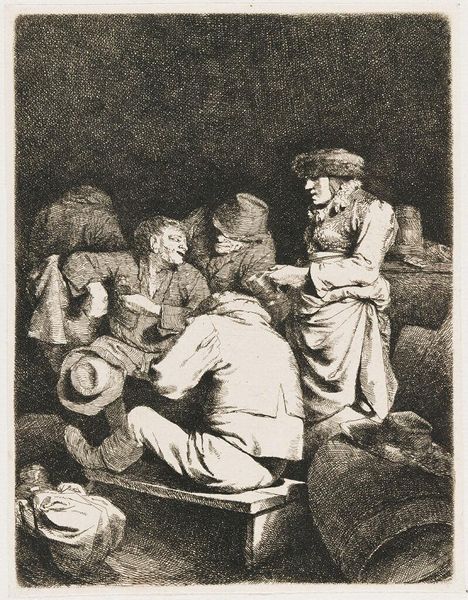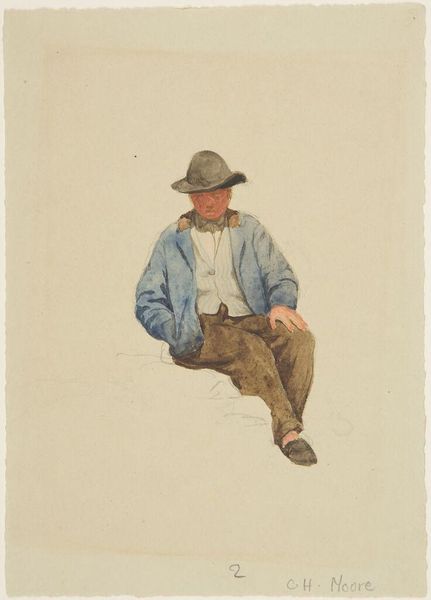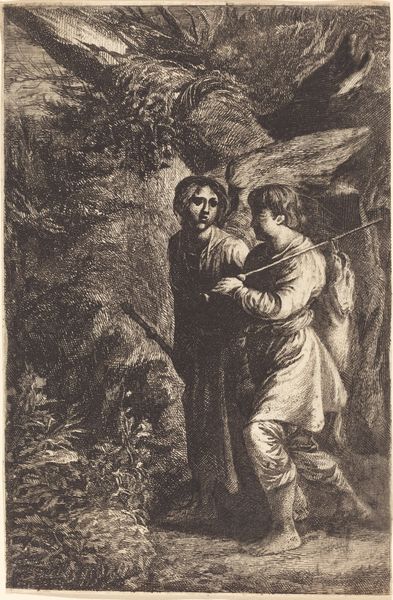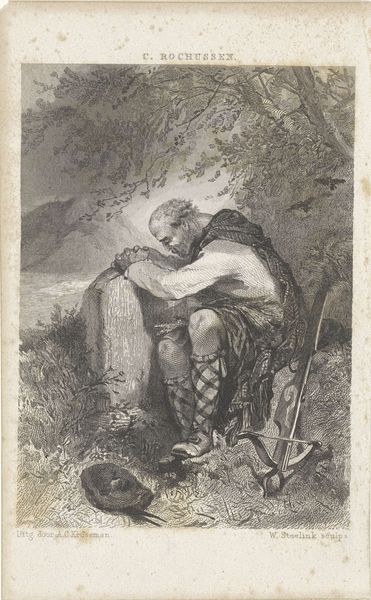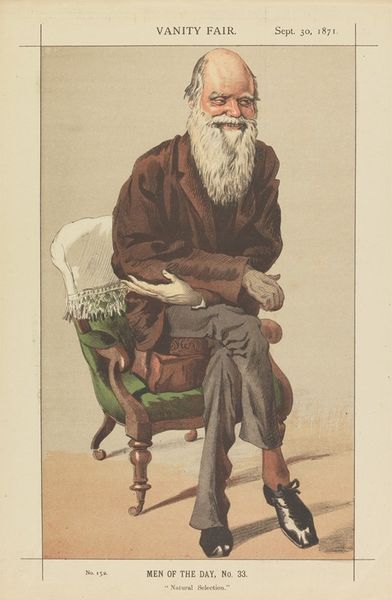
Dimensions: 72 x 55 cm
Copyright: Public domain
Curator: Perov's "Parisian rag-picker," created in 1864 using oil paint, immediately evokes a sense of solemnity. The somber palette emphasizes the weight of existence reflected in the subjects' posture. What strikes you first about this work? Editor: The first thing I notice is the materiality of the garments. The painting really focuses on the heavy twill and rough weave of their clothing; it appears almost tactile. And look at that large, woven basket, clearly handmade for the job of collecting scraps. Curator: Absolutely. The artist uses texture to underscore their societal position. Note how Perov masterfully uses tonal variations to define the subjects; observe the rough texture that defines their coarse clothing as if to say “worn by life.” Editor: It brings into stark relief the daily reality for these workers in mid-19th century Paris. The way their tools and garb are rendered so diligently seems like Perov seeks to give dignity to overlooked labor, transforming discarded scraps and the process of ragpicking into a powerful, sobering subject matter. Curator: Precisely, the genre is realism with romanticist undertones. Beyond mere depiction, this painting utilizes color to invoke emotional depth, elevating the personal circumstances to universal truths, where composition, form, and thematic depth intertwine. Editor: Considering its making, one wonders about the resources and the access Perov had compared to his subjects, the social dimensions come to mind when examining a work like this. It prompts a question, can paintings become documents that carry evidence of consumption and waste from a period? Curator: A relevant question that continues today, doesn’t it? Reflecting on it, the painting isn't merely representational but speaks profoundly about society's forgotten lives. Editor: Indeed. I will never see labor or material consumption the same way.
Comments
No comments
Be the first to comment and join the conversation on the ultimate creative platform.

